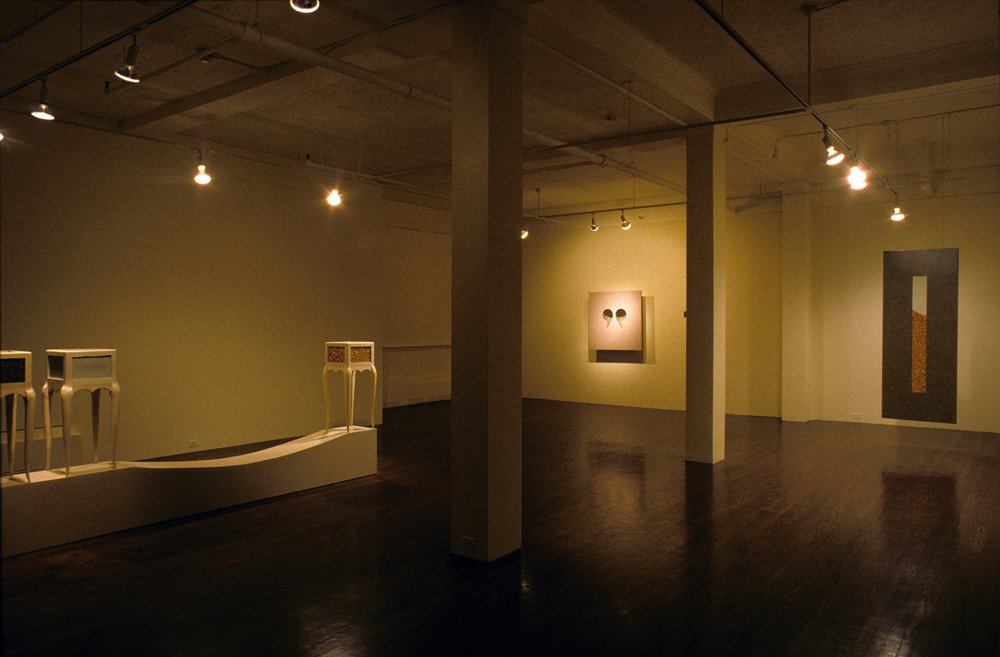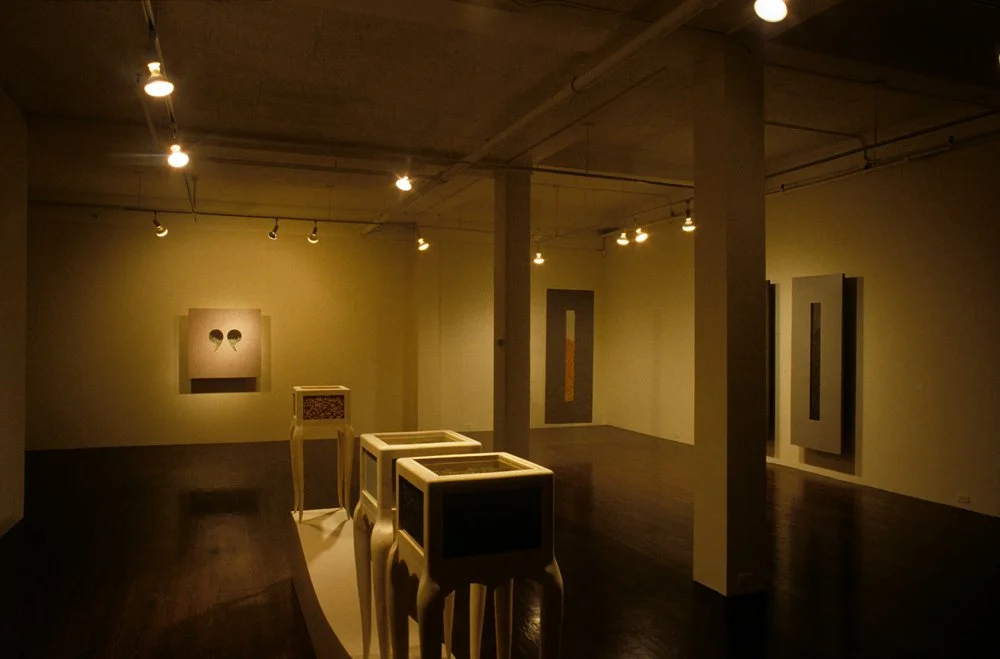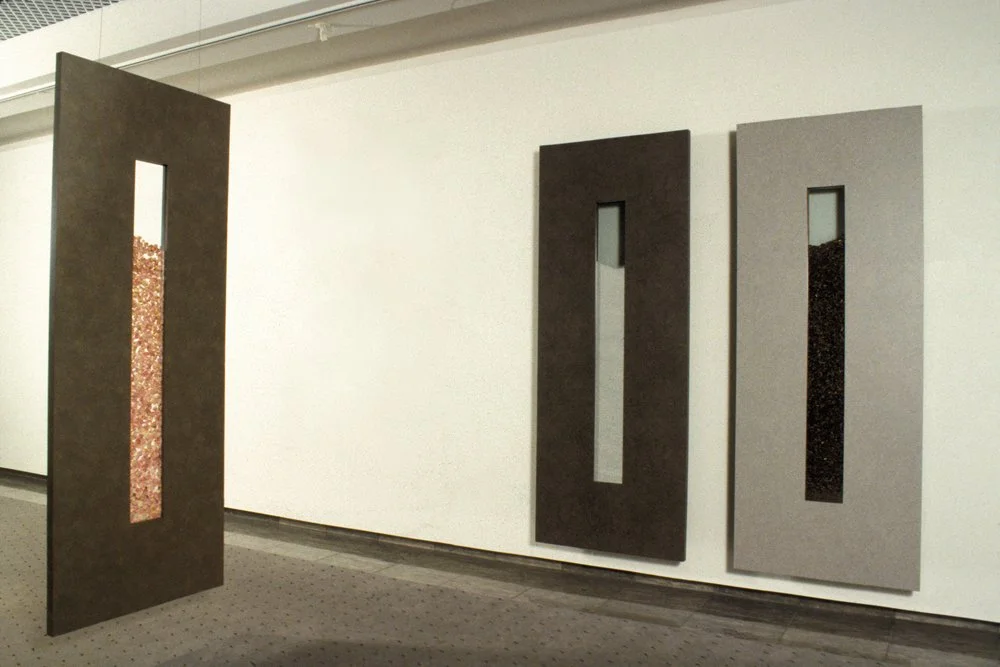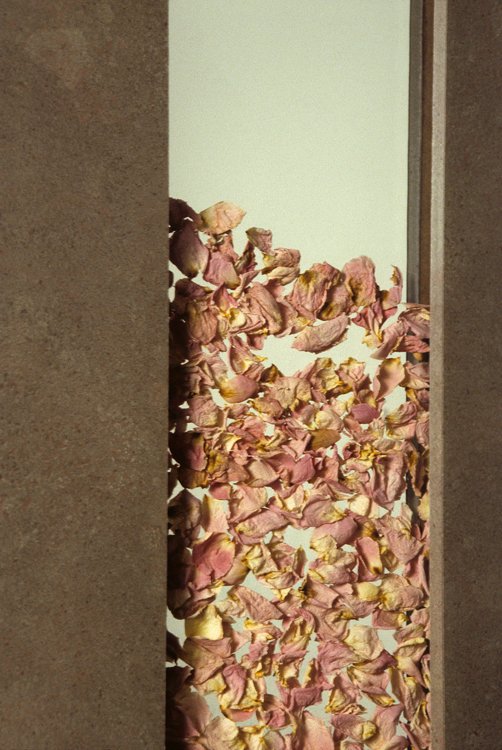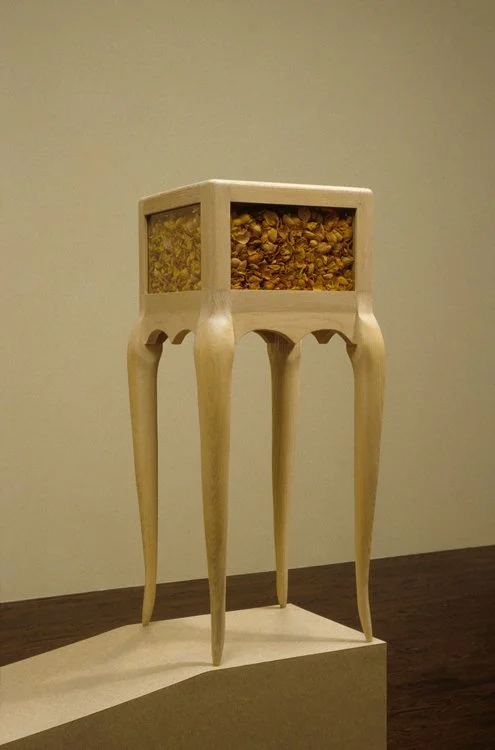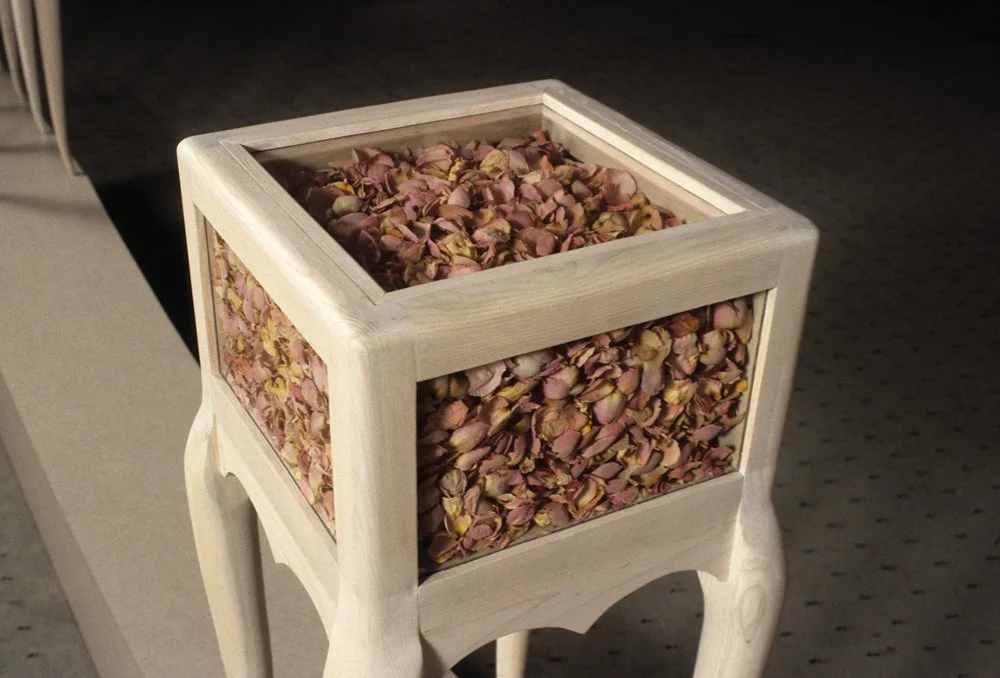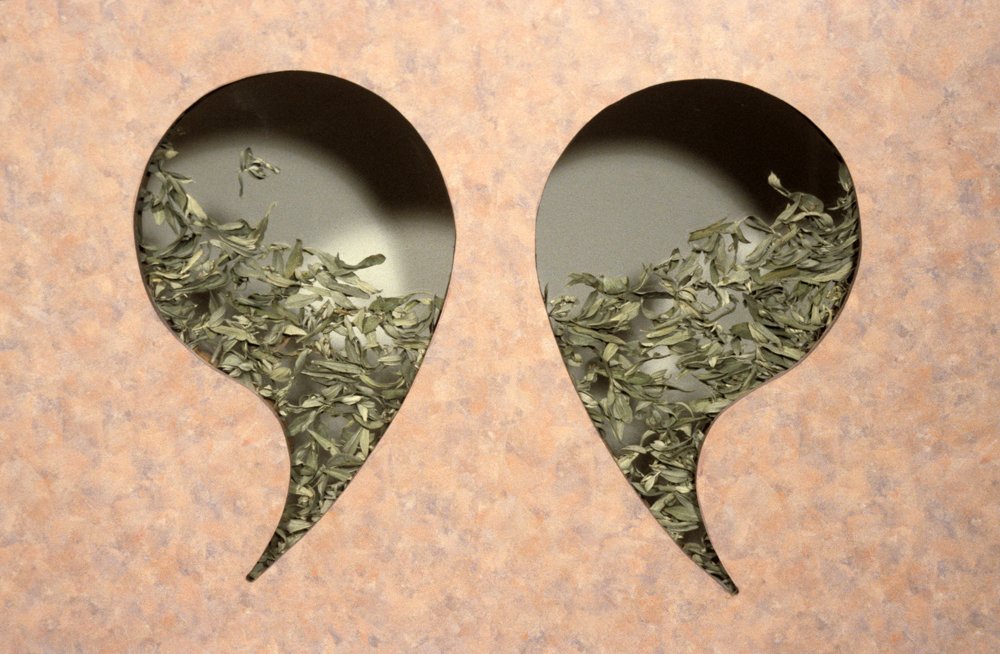in her nature
“… if nature is brought into her culture here, through diligent transformation of the artist’s work … [the] effort and effect of labour is a freezing (glazing) of nature (the prickly, tactile bark, the scent of leaves and petals, the fragility of ashes) into ornamental form … nature has been transformed with an ironic smile into an interminable paradox – culture as nature, and nature as culture – and neither true to itself” (Barbara Fisher: “Susan Shantz: in her nature”, catalogue essay)
Photo credit: Vid Inglevics
Solo Exhibition:
in her nature, Glendon Gallery, York University, March 6 – April 13, 1997
Group Exhibitions:
in her nature, Kenderdine Gallery, U. of S., Saskatoon. In "Imagining Eden: The Contemporary Canadian Landscape,” 1996
a breathing space, Southern Alberta Art Gallery, Lethbridge, AB. In “Nature Redux,” 1996
Publications:
Barbara Fisher: “Susan Shantz: in her nature,” Glendon Gallery, 1997 + link to pdf
… if nature is brought into her culture here, through diligent transformation of the artist’s work … [the] effort and effect of labour is a freezing (glazing) of nature (the prickly, tactile bark, the scent of leaves and petals, the fragility of ashes) into ornamental form … nature has been transformed with an ironic smile into an interminable paradox – culture as nature, and nature as culture – and neither true to itself … In their museal silence and their fragile, funereal contents, with their mortuary nostalgia and stirring of remembrances past, the works suddenly bring to the forefront a most ephemeral, inherently unstable, darkly frightening prospect – the body’s final disintegration into nothing but dust, ashes and terra tundra.
David Garneau: “Multiple Natures,” in Nature Redux, Southern Alberta Art Gallery, 1996 + link to pdf ("Susan Shantz’s Breathing Space: A History Lesson", pp. 48 - 52)
Along the curved promenade there are large, calligraphic letters carved into the lawn and filled with red shale. The phrases are “a breathing space” and “a turning around place.” A laser-cut steel version of these words appears in two arcs on the outside of the Gallery’s north wall … Like other monuments in the park … it is a reminder of that site’s history. But it is also an anti-monument, an intervention that questions the veracity of monuments and shows how oral history and popular re-readings change history … Susan Shantz’s installation finds poetry in an official script by turning it on itself.
